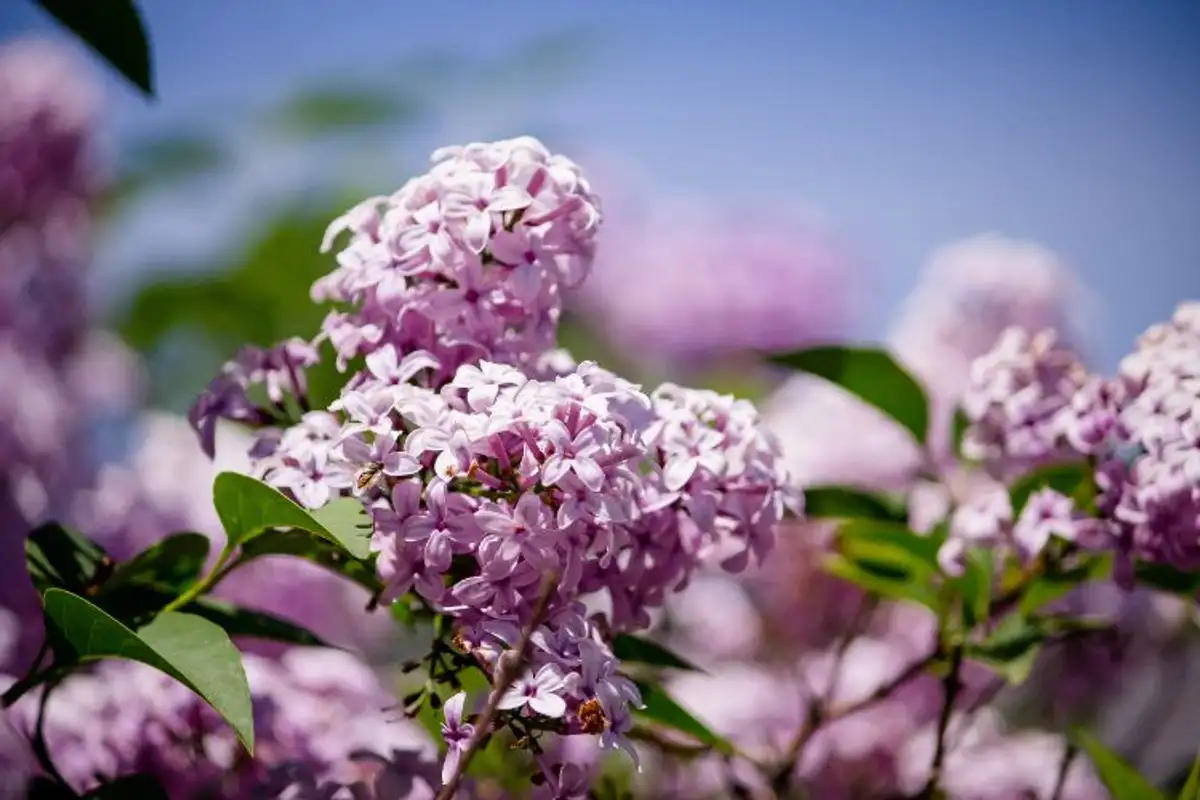Planting Lilac: When and How to Cultivate this Delicate Shrub
Are you longing to experience the beauty and fragrance of the delicate lilac flower? If so, you're in luck! The Deavita editorial team is here to provide you with all the information you need to successfully cultivate this undemanding shrub in your garden. From the best time to plant to proper care and maintenance, we've got you covered. Get ready to indulge in the sweet scent of lilacs in full bloom!
When should you plant the lilac?
In the 18th century, the scent of lilac was already captivating the senses in the Middle East and soon after, it started being cultivated in Europe. The unforgettable fragrance of lilacs is a result of their abundant blooming, featuring pink-purple flowers that transition through shades of blue and white. These shrubs can grow into small trees with multiple stems, reaching heights of up to 4 meters.
So, let's dive into the world of lilac cultivation! When is the best time to plant them? The most favorable period for planting lilacs is in the autumn, between September and May, as long as there are no severe frosts. This time of year stimulates root growth, making it ideal for planting lilac seeds. However, if you're purchasing a lilac shrub in a container, you can also plant it in spring or summer. Lilacs are known for their undemanding nature and thrive well in sunny garden soils. It's important to ensure the soil is well-drained to prevent water stagnation around the roots. Additionally, you have the freedom to plant lilacs individually or in groups, forming a beautiful hedge.
How should you plant the lilac?
Before planting, prepare the soil by digging a planting hole approximately one week prior to the shrub's delivery. This will allow the soil to aerate. Remove any excess roots and weeds, while adding composted manure for added nutrients. Once you have the lilac shrub ready in a container, make sure to moisten the roots by immersing the plant in water.
Next, place liquid fertilizer at the bottom of the hole to create a nutrient reservoir. Mix compost or loam into the existing soil, especially if it is heavy or sandy. To prolong the vase life of your lilacs, fill the dug hole with a mixture composed of two-thirds soil and one-third blend. Compact the soil to create a watering trough, then add 12 to 15 liters of water to achieve good settling. After lightly trimming the branches, position the lilac vertically in the hole.
How should you prune the shrub?
Pruning fragrant lilacs is essential for promoting blooming and maintaining the elegant and delicate appearance of the plant. It's recommended to prune lilacs after they have finished flowering in order to maintain their volume. Each year, remove shoots that are near the ground and faded blossoms to encourage healthy growth and beautiful blooms. When deciding how far to prune, imagine the branches are destined for a fragrant bouquet. Additionally, it's important to thin out excessively floriferous branches to ensure good air circulation and prevent overcrowding.
How should you care for the lilac?
The lilac is a delicate flower that requires minimal care to delight you with its everyday beauty. However, if you want your lilac to bloom abundantly and remain healthy, it's good to follow some basic care methods. Removing faded flowers prevents seed formation, so it's important to promptly prune any withering blossoms. Poorly spaced branches or those heavily invaded by vegetation should also be eliminated to maintain a harmonious structure for the lilac. It's best to avoid intervention from July onwards, as it may compromise next spring's blooming. Regularly check the moisture of the soil around the plant and water when the soil is deeply dry.
What are the diseases of the lilac?
Unfortunately, like any plant, lilacs can be susceptible to a number of diseases. Regularly inspect the leaves and stems for any signs of disease or fungi. For example, powdery mildew is a common fungal disease that can hinder growth and blooming. If you notice a white-gray powdery layer on the leaves, your lilac may be infected. To prevent the occurrence of powdery mildew, ensure your lilac receives sufficient air and sunlight. Alternatively, you can spray the infected leaves with a solution of baking soda. If you notice yellow or orange spots on lilac leaves, it's likely rust. Excessive watering can promote the formation of rust. As a preventive measure, spray a solution of garlic and water.
Hello, I'm Olivia, a proud member of The Daily Herald team. As a passionate writer, I enjoy sharing captivating stories that bring a touch of elegance to our readers' lives. In fact, one time while working on an article about fashion trends, I stumbled upon a hidden gem boutique that ended up becoming a favorite among our loyal followers. It's moments like these that make my job truly rewarding and inspire me to keep uncovering the best lifestyle secrets for our readers.

